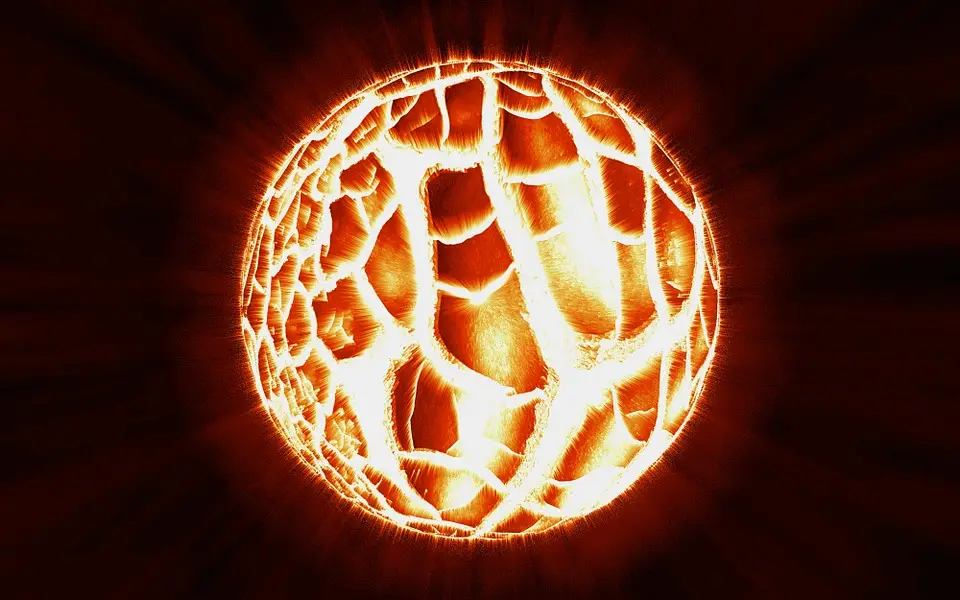From movies to songs to even religions, the Sun’s been quite an inspiration! The literal star attraction of the solar system, this huge ball of gas is what’s keeping our planet alive.
But just how huge is huge? How big is the Sun?
![How Big Is The Sun? [Yes, It's BIIIG]](https://journalofcosmology.com/wp-content/uploads/2022/09/How-Big-Is-The-Sun-Yes-Its-BIIIG.png)
There could be a couple of ways to answer, so here’s everything you need to know about the star and its size.
Ready? Let’s get started…
How Big Is The Sun: Short Summary
There’s no doubt that the Sun is ginormous, especially when pitted against our planet. There’s more than one way to measure how big the Sun really is—scientists use both volume and mass to answer questions about the Sun’s size.
Whatever method you use, the Sun is the largest celestial body in our solar system. Its diameter is 865,000 miles and its mass is around 10 raised to the power of 30 multiplied by 2.
https://www.youtube.com/watch?v=u70lZSMP9Bo
About The Sun
Having burned bright for the last 4.5 billion years, the Sun, our solar system’s largest object, sits at the heart of our solar system, responsible for keeping us earthlings alive from a distance of 93 million miles (though ironically, nothing can survive on the Sun itself!).
Not only does it provide us with the conditions necessary for life, but it is also what’s keeping the many elements of the solar system harmoniously together—its gravitational pull is what keeps Pluto, Mercury, and everything in between (even dust!) in its own place, revolving around the Sun.
The Sun’s levels of helium and hydrogen are what keep it burning—hydrogen gets converted to helium and burns up in a nuclear reaction, resulting in the expulsion of heat, light, and electromagnetic rays.
![How Big Is The Sun? [Yes, It's BIIIG]](https://journalofcosmology.com/wp-content/uploads/2022/09/How-Big-Is-The-Sun-Yes-Its-BIIIG-1.png)
The Sun’s hottest part is its core, with temperatures reaching over 27 million degrees Fahrenheit in this region. Every single thing that happens on the Sun, no matter how small, has a definite influence on events in our entire solar system.
Ways To Measure The Size Of The Sun
Samos’s Aristarchus was the first person to even attempt a calculation of the Sun’s size. This third-century Greek astronomer and mathematician used the principles of geometry way back when to arrive at an answer, but due to the lack of sufficient instruments and some incorrect values, his answer was incorrect.
Now, there are several ways to measure the Sun’s size, using parallax and trigonometry in combination with precise, advanced tools. For example, scientists measured the Sun’s radius in 2003 and 2006 by closely monitoring and measuring Mercury’s transit before the Sun, with the help of instruments at SoHO, the Solar and Heliospheric Observatory.
You can even measure the size of the Sun with a pinhole projector from the comforts of your backyard!
However, for convenience and better understanding, the Sun can be measured using mass and volume.
Using Mass And Volume To Measure The Sun’s Size
The first one is to measure it by measuring its mass. If you recall fifth-grade science, you’ll remember that mass is the amount of matter contained in an object.
Scientifically, mass is a product of an object’s density and volume multiplied. Units such as kilograms, pounds, grams, and so on that we use in daily life all denote the mass of an object.
The second way to measure the Sun is by using volume. Volume refers to the amount of space occupied by an object, measured in cubic centimeters. It’s quite easy to calculate the volume if you have a regularly shaped object. In this case, you only need to multiply the length, height, and width of the object.
The calculation gets a little more complicated for irregularly shaped objects. Each object may have its own equation for volume calculation based on its dimensions.
The Size Of The Sun
Based on the above two measures, the Sun’s size is as follows.
Mass Of The Sun
As mentioned earlier, the Sun’s mass is nearly ten raised to the power of thirty, multiplied by two. For context, this means that the Sun has over 330,000 times the mass that the Earth has.
For more context, that’s 99.86% of the entire solar system’s matter content (fun fact—Jupiter’s next on the list of celestial bodies with the most mass in our solar system, with a mass of 1.898 multiplied by 10 raised to the power of 27).
Volume Of The Sun
The Sun’s diameter is nearly 865,000 miles, as mentioned earlier. For context, this is around 109 times the length of the Earth’s diameter. For more context, you could lay 196 Earths across the face of the Sun, and if you want even more context, you could fit about 1.3 million Earths into the Sun!
The Earth’s hardly the average size of a sunspot on the Sun’s surface.
The Size Of The Sun Compared To Other Planets
Here’s how the Sun fares against other planets in the solar system:
- Pluto: When compared to the dwarf planet, the Sun is a mind-boggling 585 times the size of Pluto. This means that 200 million Plutos could fill the Sun.
- Uranus: 22,000 life-size models of this planet could fill the Sun, with the latter being 27.4 times larger than the giant ball of gas.
- Neptune: Neptune is 27.7 times smaller than the Sun and could fill it with 21,000 replicas of itself.
- Saturn: Saturn is only 12 times smaller than the Sun and you could fill around 1,600 Saturn-sized bodies into the Sun.
- Jupiter: The largest planet in the solar system, Jupiter is only 11 times smaller than the Sun. You could fit around 1,000 Jupiters into the Sun.
- Mars: The Red Planet is 207 times smaller than the Sun and you could fit 7 million life-sized replicas of Mars in the Sun.
- Earth: As mentioned earlier, the Sun is 109 times bigger than the Earth and could easily accommodate 1.3 million Earths inside it.
- Venus: The Sun is around 115 times bigger than the Morning Star. It can easily accommodate 1.5 million planets the size of Venus inside.
- Mercury: Lastly, you could fit 21 million planets the size of Mercury into the Sun, with the latter being a mind-boggling 277 times bigger!
Is The Sun The Biggest Star?
It may surprise you, but the Sun is only an average-sized star when you pit the whole of outer space against it—there are stars that are over 100 times the Sun’s size! (Scary and humbling at the same time to think where that puts the Earth, right?)
There are several stars bigger than the Sun, such as:
- Aldebaran (400 times brighter than the Sun and 44 times bigger)
- Antares (10,000 times brighter than the Sun and bigger by 685 times)
- Rigel (75 times larger and 100,000 times brighter)
- Betelgeuse (100,000 times brighter than the Sun and 1,400 times bigger)
- UY Scuti, deemed the largest star in the universe currently known to mankind—it’s 340,000 times brighter than the Sun and 1,700 times bigger, with the capacity to accommodate 5 billion Suns inside
These are only a few of the several stars larger than the Sun.
Does The Sun’s Size Impact The Solar System?
As mentioned earlier, every little thing that happens on the Sun impacts the solar system in some way or the other. The entire solar system is held in place by the Sun’s gravitational force and the interactions of each celestial body’s individual gravitational force with that of the Sun.
Any change in the size of the Sun would impact the gravitational hold it has since mass and gravitational force are directly proportional. Any increase or decrease in the size of an object will cause an increase or decrease, respectively, in the object’s gravitational force.
This will cause planetary positions to change, and subsequently, the Goldilocks zone as well (the zone with the conditions most conducive to life), altering life as we know it.

Will The Sun’s Size Increase?
Yes, the Sun’s size is going to increase.
At some point in the Sun’s life, the stability between the Sun’s internal gravitational forces and its externally bound nuclear energies will deteriorate, and when the Sun’s hydrogen stores are mostly used up, the Sun’s surface will expand to cover the first three planets closest to it (which includes the Earth).

It will stay in this state for around one billion years before shrinking in size, when all of its helium reserves are used up, to a white dwarf.
However, before you lose any sleep on what is the stuff of the most terrifying sci-fi movies, rest easy—we have at least 5 billion years to go before this phenomenon can occur.
The Bottom Line
The Sun is extremely important not just to enhance the pop-cult experiences in our life but to sustain life as we know it, with even the smallest change in the Sun’s size causing a change in the entire solar system.
The Sun’s definitely one big ball of gas, but it’s nowhere close to being the biggest in the universe. That said, it is still the biggest celestial body in our solar system.
